The superficial definition is one that I toss around all the time – simply, the view that your eyes see either through an optic or with use of open sights.
The real definition of what is sight picture is a little more complicated but not at all difficult to understand.
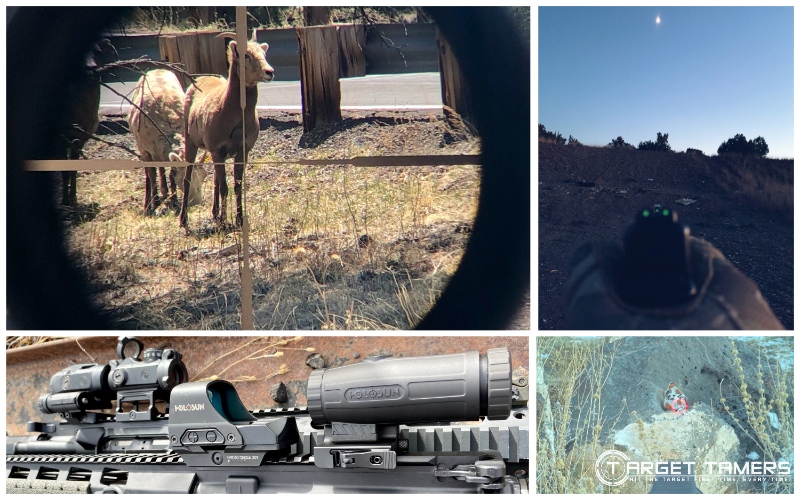
I interpret what the sight picture is after I address the first half of this explanation – what is sight alignment?
Then I’ll discuss only a few but common factors that the affect sight pictures.
What is Sight Alignment?
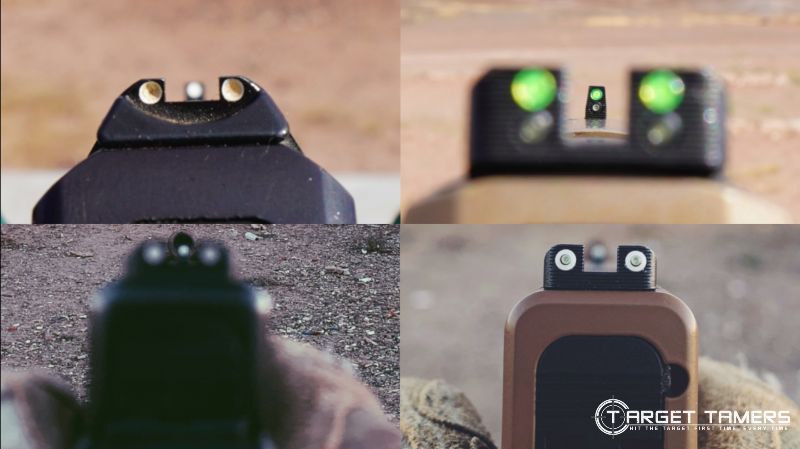
The sight alignment is the relationship of rear and front sights. It determines the connection between POA (Point of Aim) and POI (Point of Impact). This is essential with pistol iron sights, AR BUIS (Back-up Iron Sights), and rifle open sights as seen on shotguns, muzzleloaders, and rimfire rifles.
For an in-depth how-to on sighting in your iron sights to achieving proper sight alignment, check out our guide.
With optics like riflescopes and red dot sights (RDS), iron or open sights are the secondary sighting system. The reticle or a simple dot in the optic then becomes the primary sighting system and appears to be superimposed on the target.
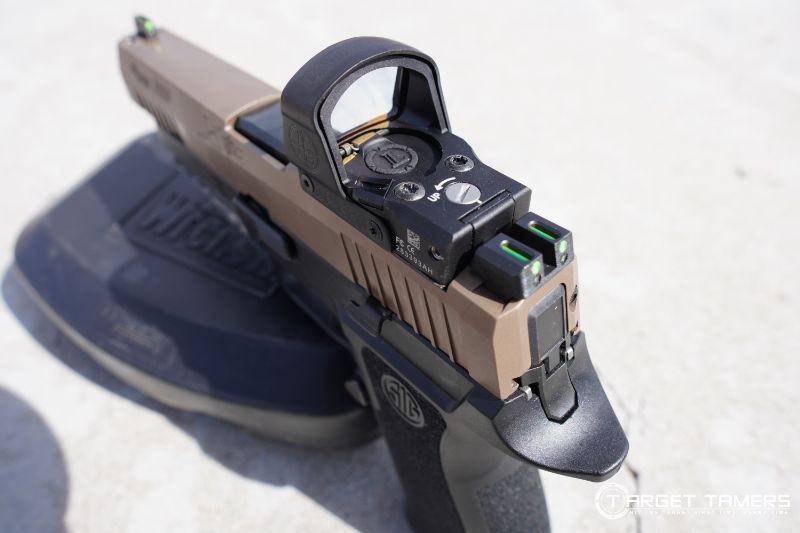
I would describe optics as self-contained as there is no ‘front’ and ‘rear’ sight to align together. However, it does not mean that sight alignment is skipped over and is not necessary. On the contrary, if a scope or red dot is not mounted correctly, problems such as reticle cant, parallax, and accuracy issues are the result.
For zeroing a red dot sight, see our step-by-step instructions.
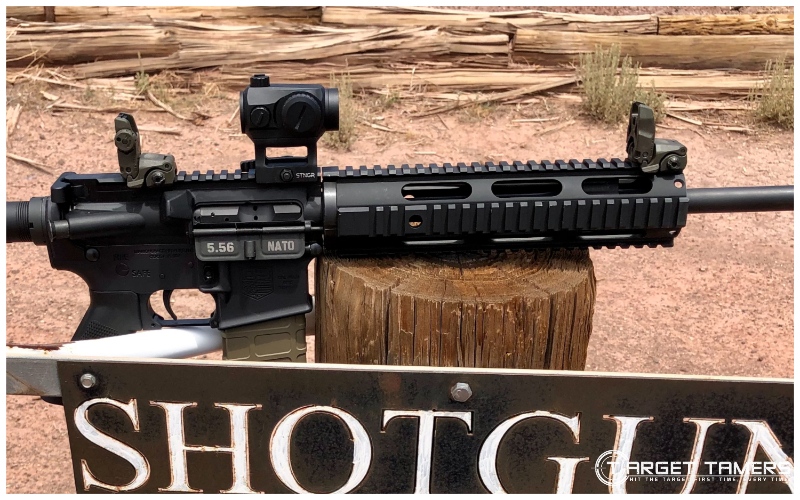
To summarize in as few words as possible:
Sight alignment – proper alignment between sights/optic and the bore.
It has everything to do with ensuring that your POA is indeed your POI by starting with the proper alignment of your sighting system.
Sight alignment is affected by mounting, sight radii, and sighting-in your sights.
What is Sight Picture?
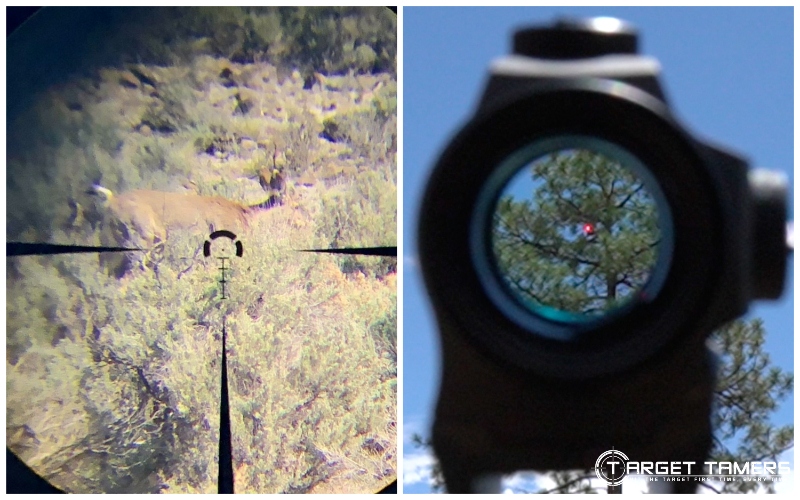
The sight picture is the relationship between proper sight picture alignment and the target. The sight picture is simply what you see when your aligned sights are aimed on a target. With correct sight alignment and sight picture, intentional POI can be acquired.
Sight picture – using the proper sight alignment to acquire POI on the target.
Oftentimes, the sight picture is used as a casual term to describe what you’re seeing with your eyes when using a firearm. This is usually in relation to looking through a riflescope or a red dot sight.
I’m certainly guilty of using it like this as it’s an easy way to describe the quality of the image of what you’re seeing through an optic.
As you can tell, the term ‘sight picture’ holds a little more weight than just describing what the image looks like through the FOV (Field of View).
Optical Sights VS Iron Sights: Sight Picture
In general, the sight alignment process is different between iron sights and optical sights. However, the end concept is the same: put the sights on the target. Once a target is acquired, that sight picture will look different to the shooter using irons or an optical sight like a scope or a red dot.
Optical Sights: What does the Sight Picture Look Like?
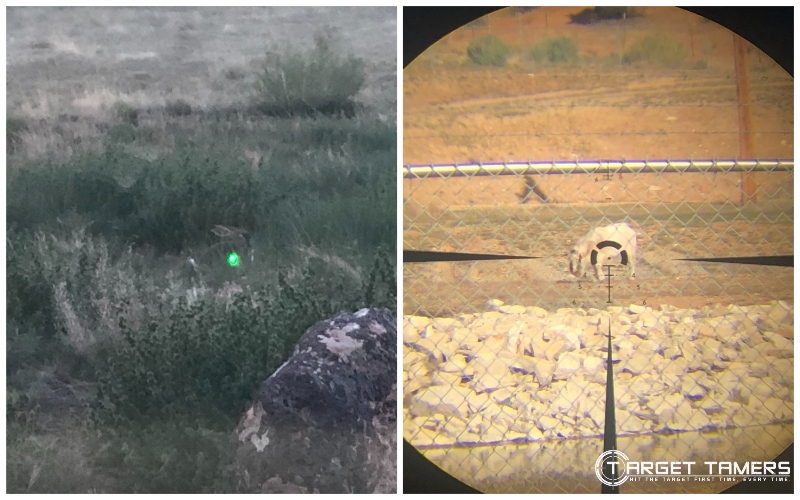
The sight picture through optical sights such as riflescopes and red dot sights consists of a correctly zeroed reticle (crosshairs or dot) aimed on a target. The properly zeroed sight has fulfilled the sight alignment requirement. While aiming at a target, this is the sight picture.
Through a scope or RDS, it’s easy to look through the glass lens that is surrounded by a frame and immediately acquire your sight picture. In an optic with magnification, everything seen in this window is called the FOV.
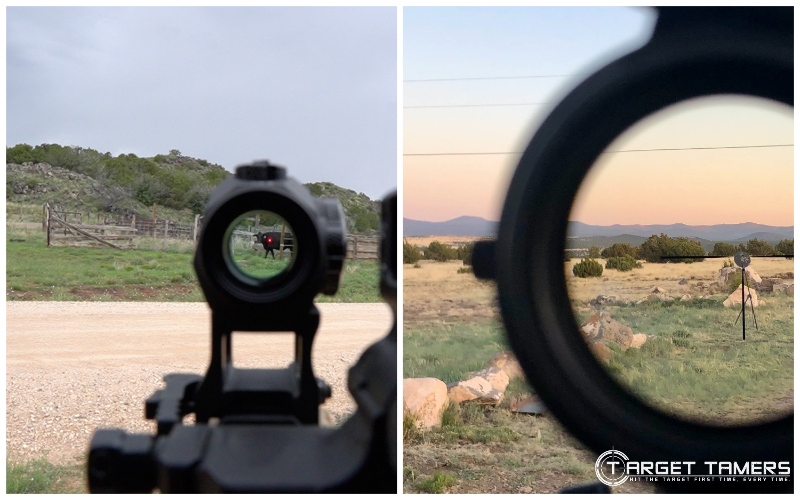
Without magnification (1x), everything you can see with your eyes is the FOV and thus the optic provides an unlimited FOV.
Assuming that your riflescope or red dot has been properly zeroed, the reticle or the illuminated dot provide the aiming point that is then placed on (and superimposed) on the target. Your POA should also be your POI.
The sight picture is the clear view of your sighting system (reticle or red dot) with a clear view of your target.
Iron Sights: What does the Sight Picture Look Like?
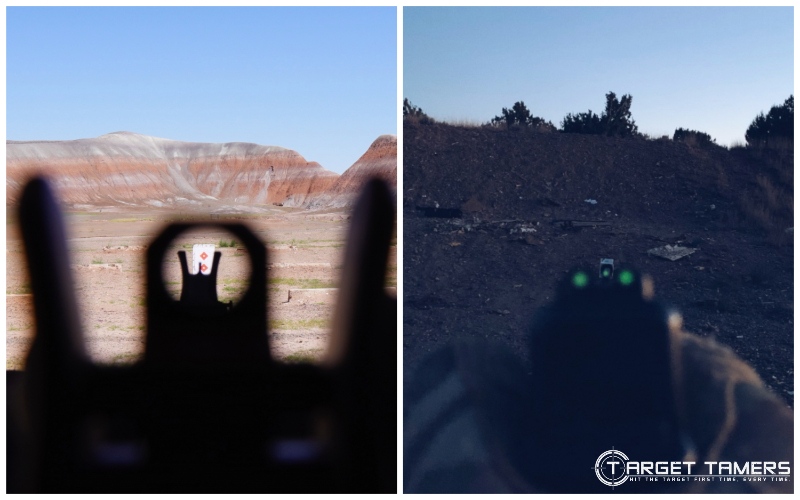
On average, with BUIS and pistol iron sights, the sight picture is different to the sight picture of a riflescope or red dot sight. With irons, focus remains on the front sight for the most accuracy. The front sight is clear while both the target and rear sight are fuzzy.
Why are they fuzzy?
The eye cannot simultaneously focus on three focal points at various distances – the rear sight, front sight, and the target.
Sometimes, old age or refractive error conditions can make it difficult to see the front sight clearly.
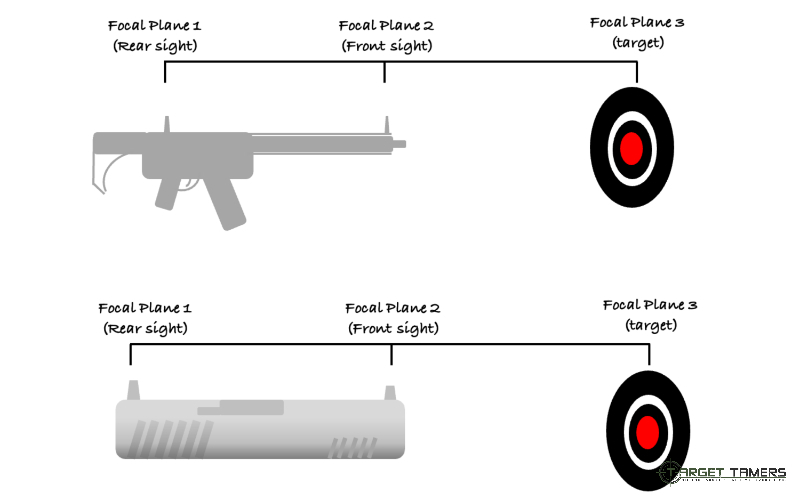
This is why optical sights are popular on both handguns and rifles as they eliminate the need for multiple focal planes and poor visual acuity from using iron sights. But they’re not always the end-all-be-all for poor vision – just saying.
But I digress… In this case, the sight picture is also related to the position of the front sight on the target. I don’t mean sight alignment. Remember, at this point, our front and rear sights should already have alignment, i.e., they should already be zeroed.
What I’m referring to is where that front sight aims on a target. Is it on the bull’s-eye or do you aim slightly above the front sight? This sight picture is usually determined by the pistol and sights manufacturer. But I’ll address that in a second…
What Affects the Sight Picture?
There are several factors that can affect clearly seeing the target and being able to successfully have your POA match your POI even with proper sight alignment. Some of these factors include bullet drop, wind, mirage, stance/position, cheekweld, presentation, grip, trigger management, and more.
However, I’ll only go over some of the most popular factors that are related to optics or iron sights.
Pistol Holds
Overall, the sight picture describes the aiming relationship between the sights and the target. In regard to pistols and irons, there are three popular sight picture methods: combat hold, center hold, and the 6 o’clock hold.
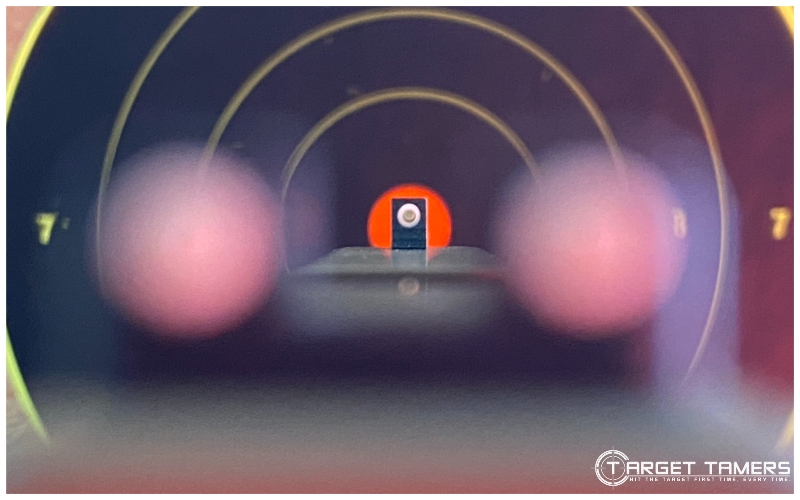
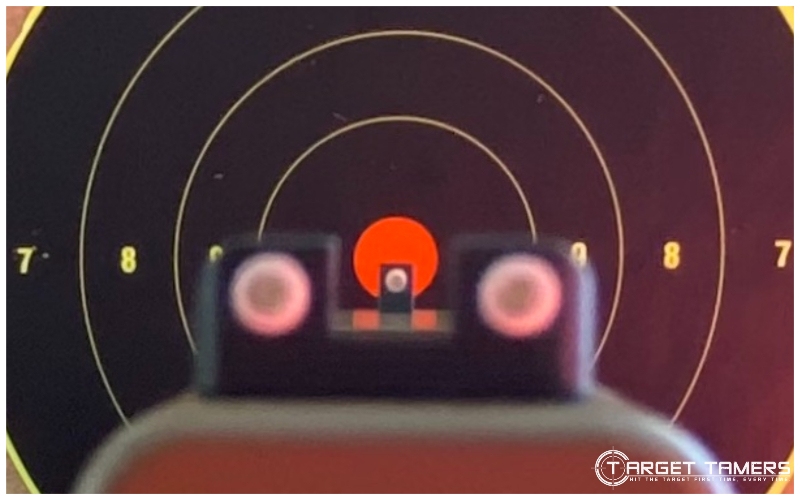

Combat hold – The dot on the front sight completely covers the POA. Where the POA is, the POI will also be.
Center hold – The POI is the very top of the front sight.
6 o’clock hold – The front sight sits below where you want you want your POI to be. Thus, the POA is slightly below the bull's-eye and the POI is actually slightly above the front sight.
Elevation & Wind Holdovers
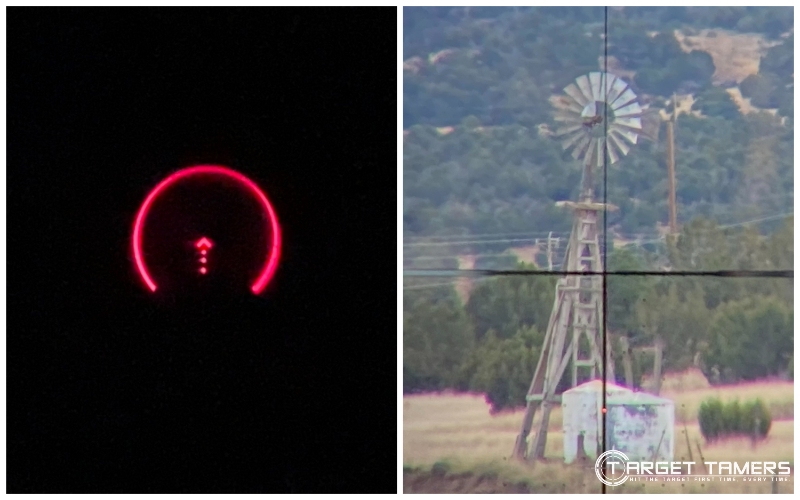
On average, holding over for elevation and wind can be easier with reticles designed for holdovers. Some red dot sights have reticles that compensate for drop. With iron sights or a red dot, adjusting the sight picture for a higher POA can deliver POI accuracy.
The math must be done for the bullet trajectory difference for precision accuracy. For BDC (Bullet Drop Compensation) reticles, a ballistic app and time at the range can help to confirm what the stats are for your setup.
Ambient Conditions
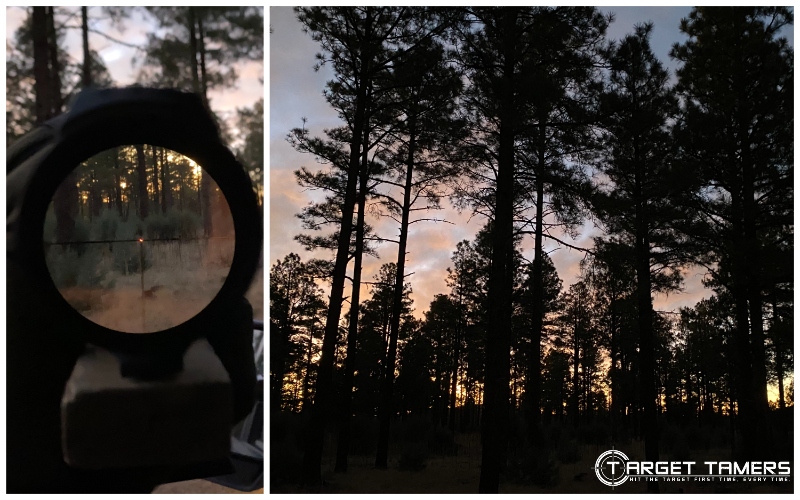
In total, time of day and the conditions can have a big impact on the sight picture. Visibility with reticles and iron sights are a common complaint in low light conditions but there are also drawbacks to illuminated alternatives too.
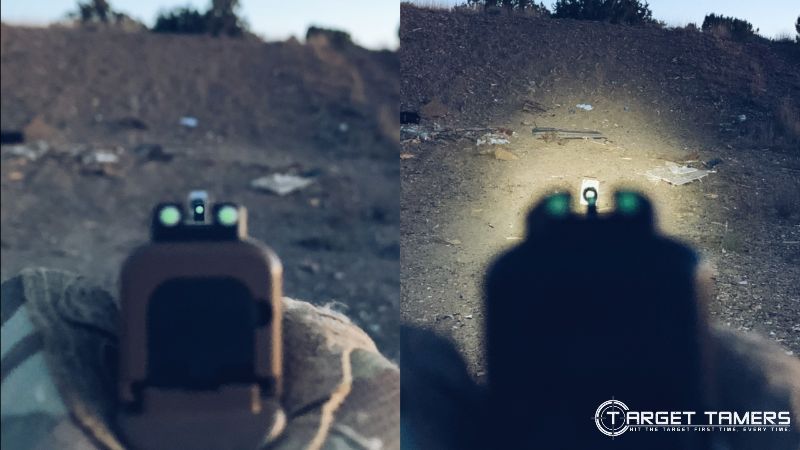
Tritium sights are excellent for their glow-in-the-dark appearance and can provide high visibility on that front sight in lowlight conditions. Fiber optic sights provide high visibility in bright conditions when you need fast sight acquisition.
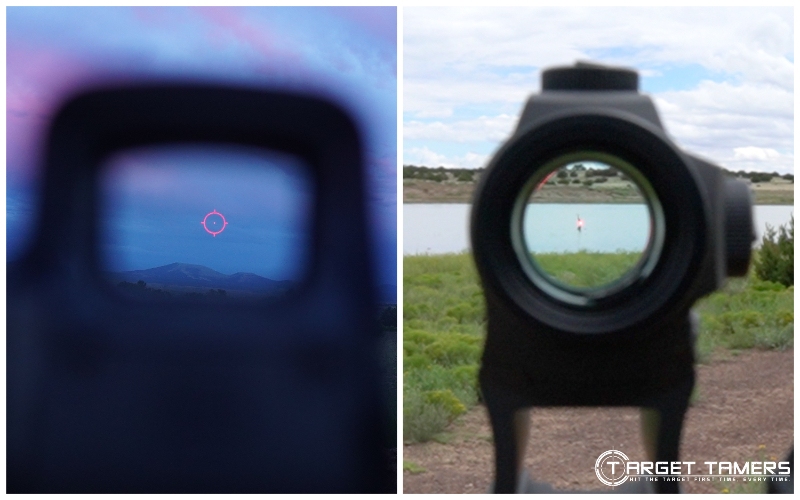
Red dots are excellent for their adjustable illumination to suit the conditions. High brightness in daylight conditions makes it faster and easier to see and use while dim brightness is best for low light and dark conditions.
Being able to see your sighting system preserves your sight picture.
Time: Defensive Shooting
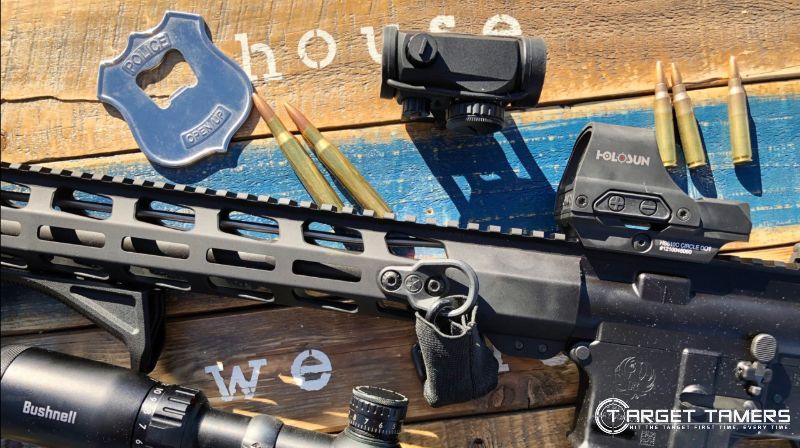
It doesn’t matter if you have a red dot or iron sights when it comes to close quarter engagement inside 10 feet. It’s then a matter of draw and fire. However, the Flash Sight Picture technique is designed for rapid defensive firearm use inside 3-10 yards.
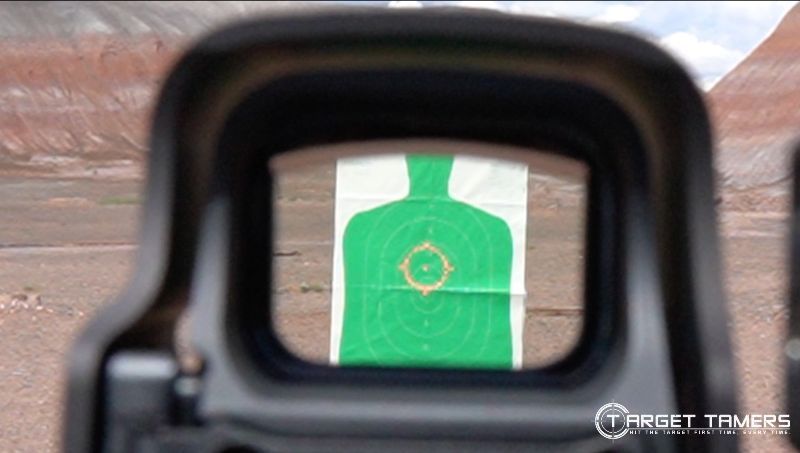
In combat engagements, no one is going to wait to provide you with the advantage of getting your sight picture. However, repetitive training in defense firearm techniques provide rapid draw, rapid sight picture acquisition, and rapid fire experience. Though there is some sacrifice to accuracy in favor of fast center mass shots, there is a standard of acceptable accuracy that can be achieved.
FAQ’s
On average, most Glock sights now have the combat hold sight picture where the ‘dot’ on the front sight blocks and covers the intended POI. Previously, Glock sights used to have the center hold sight picture where the top of the front sight is the POI.
Glock combat sight picture - Image by Tina Fa'apoi (Own Work) for Target Tamers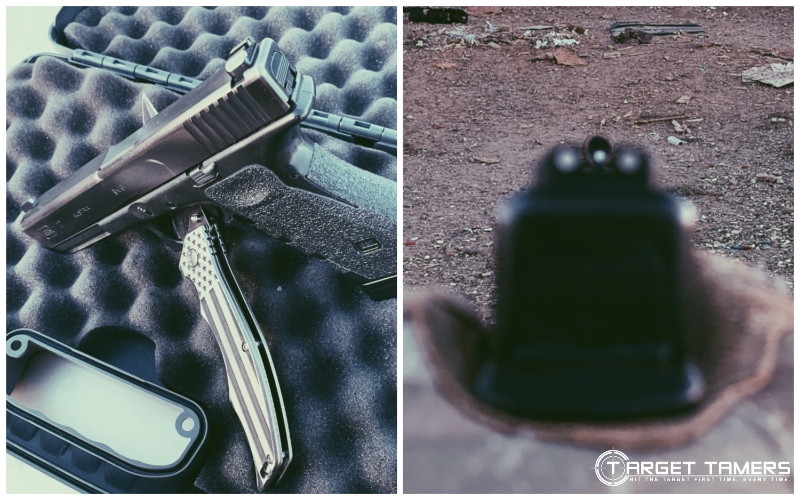
Most Sig Sauer pistols are designed for defense/combat use and sights are set for the combat sight picture. Place the dot (the front sight), which is your point of aim, to where you want the point of impact. This sight picture is excellent for rapid-fire center mass shots at close distance.
Sig P320 X-VTAC - Image by Tina Fa'apoi (Own Work) for Target Tamers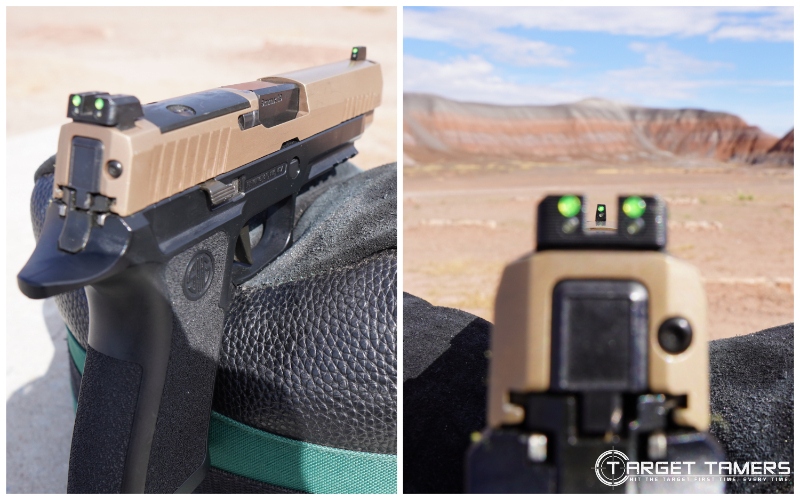
The red dot magnifier sight picture is the sight picture of a red dot sight with magnification provided by a magnifier. With or without a magnifier, a zeroed RDS still has sight alignment, and while aimed at a intended target, the sight picture. The magnifier just adds magnification to the sight picture.
1x (left) VS with 3x magnifier (right) - Image by Tina Fa'apoi (Own Work) for Target Tamers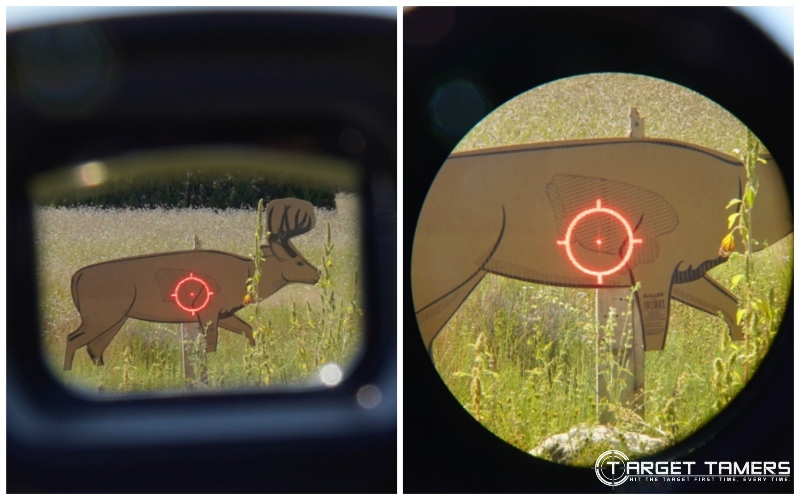
In general, use the eyepiece to get a sharp reticle and sight in the riflescope. If the scope has a side focus or adjustable objective, use it bring the target into crisp focus. Lowering the magnification may also help with keeping the sight picture steady.
Unfocused reticle (left) VS focused reticle (right) - Image by Chris "The Optics Nut" (Own Work) for Target Tamers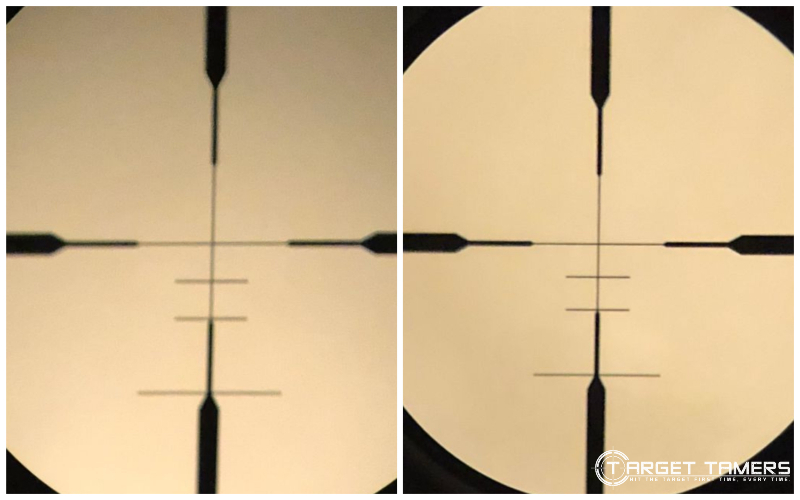
Sight alignment is the proper alignment of the front and rear sight or the alignment of an optical sight with the bore of the firearm. The sight picture is using that sight alignment while aiming at a target. They are not the same as sight alignment precedes the sight picture.
Aligned sights (top) Example of sight alignment (left) VS Sight picture w/rabbit (right) - Image by Tina Fa'apoi (Own Work) for Target Tamers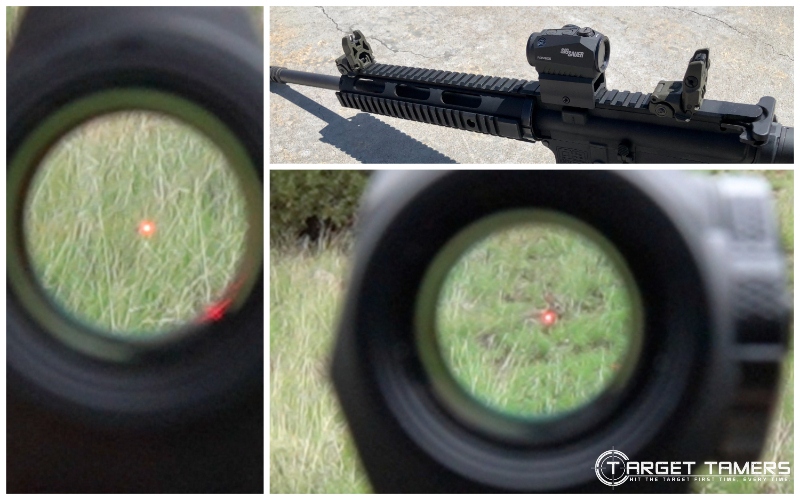
Sight Alignment VS Sight Picture
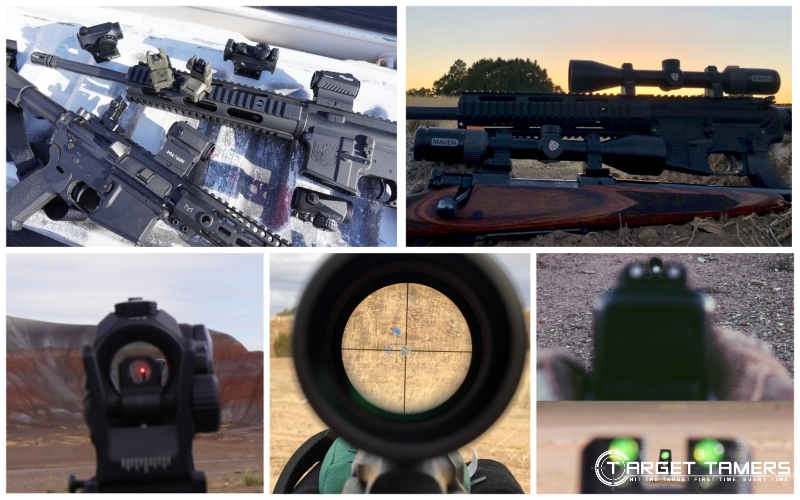
Overall, sight alignment and the sight picture go hand in hand. Sight alignment with each other (iron sights) and with the bore are essential to a successful zero. The sight picture determines the sighting system’s POA and its relationship with POI on the target.
Whether you use open sights, a red dot, or a riflescope, the concept of sight alignment and the sight picture is the same between them all.
One last time...
What is sight alignment? Align the sights. What is the sight picture? Add in a target, put your aligned sights on it, and that is the sight picture.
Further Reading



